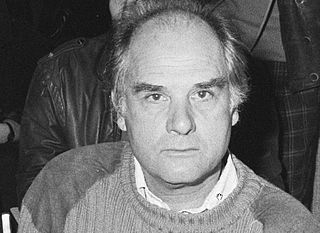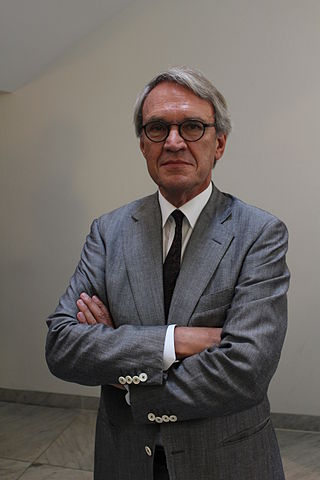Zilveren Nipkowschijf is a Dutch television and media award that has been given out since 1961 by a selection of Dutch media journalists and critics to the best show of the year.
De Grootste Nederlander was a public poll held in 2004 by the broadcasting company KRO of the Publieke Omroep. The series has the BBC's 100 Greatest Britons TV format. During the series, it included individual programmes on the top ten, with viewers having further opportunities to vote after each programme.

Piet Zwart was a Dutch photographer, typographer, and industrial designer.

Commissioners Park is a park in Ottawa, Ontario, Canada. It lies within the westernmost section of The Glebe, bounded by Dow's Lake, Preston Street, Carling Avenue and Dow's Lake Road.
The Matthijs Vermeulen Award is the most important Dutch composition prize. It was named after the Dutch composer Matthijs Vermeulen (1888–1967).

The P.C. Hooft Award, inaugurated in 1948, is a Dutch-language literary lifetime-achievement award named after 17th-century Dutch poet and playwright Pieter Corneliszoon Hooft. The award is made annually.

The Spinoza Prize is an annual award of 1.5 million euro prize money, to be spent on new research given by the Dutch Research Council (NWO). The award is the highest scientific award in the Netherlands. It is named after the philosopher Baruch de Spinoza.

Academie Minerva is a Dutch art academy.

Jan Nicolaas van Munster was a Dutch sculptor and installation artist whose work appears in many public places in the Netherlands and Germany.
The Dutch Prix de Rome is based on the originally French Prix de Rome and is awarded annually to architects and artists younger than 35. The award was initiated in 1807 by Louis Bonaparte, then ruler of the Kingdom of Holland, and confirmed after independence by William I of the Netherlands. It was canceled in 1851 by the statesman Johan Rudolph Thorbecke and reinstated in 1870 by William III of the Netherlands. Since then the winners are selected by the Rijksakademie in Amsterdam.

Theodoor (Theo) van der Horst, was a Dutch painter, sculptor, graphic artist and glass artist. Van der Horst painted people, animals and landscapes in an expressionist style. Besides oil paintings he made etchings, drawings, gouaches, sculptures and stained glass. He exhibited until the seventies in galleries and museums, but then chose to live as a hermit. He died in October 2003 at the age of 82 in Arnhem.

Carel Nicolaas Visser was a Dutch sculptor. He is considered an important representative of Dutch abstract-minimalist constructivism in sculpture.

The National Canadian Liberation Monument is a Second World War monument in Apeldoorn, Netherlands, honouring the liberation of the Netherlands. It was unveiled on 5 May 2000 by Princess Margriet of the Netherlands. It features a sculpture Man with Two Hats by Henk Visch, which is identical to one in Commissioners Park in Ottawa.

Cornelis Nicolaas Maria "Cees" Renckens is a Dutch Doctor of Medicine, gynaecologist, and a well-known skeptical activist against quackery. From 1988 to 2011, he was president of the Vereniging tegen de Kwakzalverij, which has been actively opposed to all non-science-based medicine since its foundation in 1881. Renckens has written several books about alternative medicine, pseudoscience and quackery.

The Dutch pavilion houses the Netherlands's national representation during the Venice Biennale arts festivals.
Events in the year 1945 in the Netherlands.

The Nederlandsche Vereeniging voor Ambachts- en Nijverheidskunst (V.A.N.K.) was founded in 1904. It was founded by Jacob Pieter van den Bosch, Herman Hana, Klaas van Leeuwen, Theo Molkenboer, and Willem Penaat. At the turn of the century the idea of artist-craftsmen was emerging. The existing Dutch societies and clubs for painters and architects did not adequately represent these artisans and they formed V.A.N.K., the first society for designers in the Netherlands.

Jan Hendrik Jozef Hoeijmakers is a Dutch molecular biologist, biochemist, and molecular geneticist.
The Arlecchino is an award that is awarded annually in the form of a bronze statue by a jury of the Dutch Association of Theater and Concert Hall Directors (VSCD) as a prize for the most impressive male supporting actor role of the Dutch theater season. The prize bears the Italian name of the character Harlequin, and was first awarded in 1964. The figurine has been designed by Eric Claus since 2005. Previous designers were Nic Jonk, and Pépé Grégoire.















